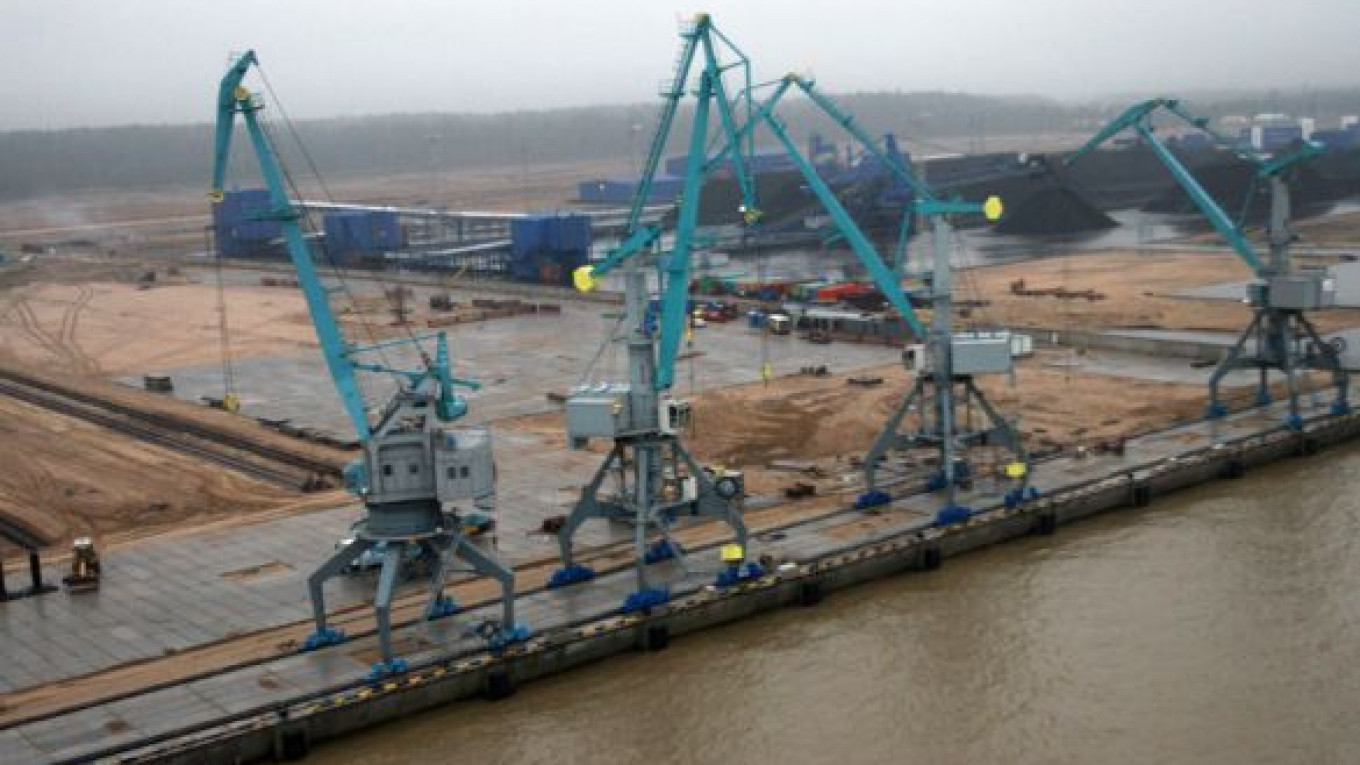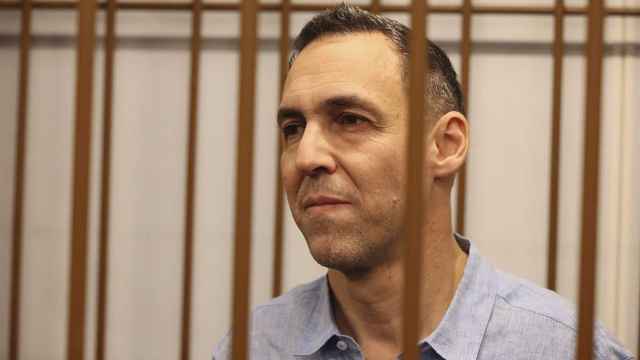PORT OF UST-LUGA, Leningrad region — An oil terminal went into operation at this Baltic Sea port on Thursday as part of an effort to ease Russia's reliance on transit countries.
The Ust-Luga terminal, which can handle about 15 percent of the country's oil exports, is likely to take away business from Ukraine, Belarus and Poland.
It sits at the end of phase two of Russia's Baltic Pipeline System, which the government ordered constructed after a transit spat with Belarus in 2007.
"Many European countries now don't get the money they used to get," said Konstantin Khamlai, director of Nevskaya Pipeline Company, which owns the terminal.
The company, half owned by Swiss-based oil trader Gunvor, has been testing the terminal since the end of March, shipping a total of 7.5 million metric tons of crude. It had to carry out the tests — which essentially amounted to additional scrutiny over operations — after several cracks appeared on the berths last year, causing an outcry from international environmentalists.
Thursday's opening comes after the authorities gave full permission to operate the terminal, deeming that there was no danger of recurring cracks. Gunvor's co-owner is Gennady Timchenko, an acquaintance of President Vladimir Putin.
Accompanying a group of reporters on the pristinely black asphalt at the terminal, Khamlai jokingly proposed that they jump to make sure the ground would hold a harder impact.
"There are no cavities underneath," he said.
Tankers from the terminal will sail to destinations like Polish ports, Rotterdam and Southeast Asia, Khamlai said.
The company is operating only one of the two berths, however. Following an unbinding recommendation from the authorities, it has decided to have workers sink rocks to the sea floor to reinforce the bottom around the other berth just in case a tanker, for whatever reason, engages its propeller while moored. It was presumed the turbulence from the spinning could potentially move the ground and ultimately cause more cracks on the wharf.
"It's an additional measure that insures us against some hypothetical troubles," Khamlai said.
Nevskaya Pipeline plans to complete the work by the end of the year.
It aims to have handled a total of 15 million tons of crude this year. The terminal's full annual capacity is 30 million tons.
The Ust-Luga terminal isn't just for Russian crude. A fifth of its oil has been coming from Kazakhstan, Khamlai said.
Russian oil travels abroad chiefly through the Black Sea port of Novorossisk, the Baltic Sea port of Primorsk and the Druzhba Pipeline, whose northern spur runs through Belarus and Poland. There are also Ukrainian ports and the eastern pipeline that pumps crude to China. Total exports from the country amounted to 219 million tons of crude last year.
Nevskaya Pipeline invested $130 million to build the terminal, including $7 million that it spent on crack prevention. Gunvor borrowed half of the money from BNP Paribas.
The return on investment period was originally calculated to be seven years but that timeframe may grow, given the unanticipated costs caused by the cracks.
Gunvor in spring sold half of Nevskaya Pipeline to Transneft and Gazprombank. Oil pipeline monopoly Transneft, which built the Baltic Pipeline System, ended up with a 26-percent stake.
Related articles:
A Message from The Moscow Times:
Dear readers,
We are facing unprecedented challenges. Russia's Prosecutor General's Office has designated The Moscow Times as an "undesirable" organization, criminalizing our work and putting our staff at risk of prosecution. This follows our earlier unjust labeling as a "foreign agent."
These actions are direct attempts to silence independent journalism in Russia. The authorities claim our work "discredits the decisions of the Russian leadership." We see things differently: we strive to provide accurate, unbiased reporting on Russia.
We, the journalists of The Moscow Times, refuse to be silenced. But to continue our work, we need your help.
Your support, no matter how small, makes a world of difference. If you can, please support us monthly starting from just $2. It's quick to set up, and every contribution makes a significant impact.
By supporting The Moscow Times, you're defending open, independent journalism in the face of repression. Thank you for standing with us.
Remind me later.






